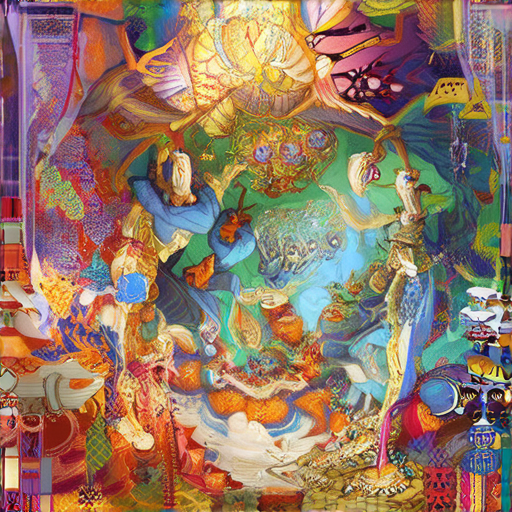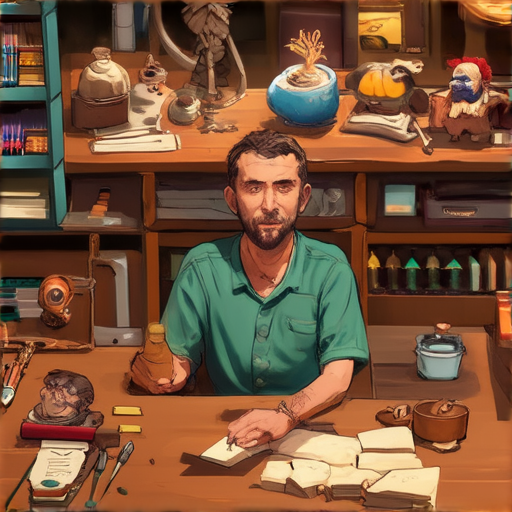For those who have ever been captivated by the intricate world of video games, tabletop role-playing, or even fiction writing, creating unique and believable characters has become an essential aspect of storytelling. Whether it’s crafting a hero, villain, or complex protagonist, the process of character creation requires a delicate balance of imagination, creativity, and strategy. With the rise of immersive gaming experiences like Baldur’s Gate 3, Cyberpunk 2077, and Elden Ring, players now have access to sophisticated character creators that allow them to tailor their avatars to suit their preferred playstyle. Meanwhile, fans of tabletop RPGs continue to rely on traditional methods, such as dice rolls and character sheets, to bring their characters to life.

Creating Your Own Character
To bring your story to life, you need characters that resonate with your audience. As a writer, crafting unique and relatable characters is crucial for engaging your readers.
-
Developing Your Character’s Personality
Your character’s personality should reflect their background, experiences, and motivations. Consider their strengths, weaknesses, likes, and dislikes to create a well-rounded individual.
- Give your character a distinct voice and mannerisms to set them apart from others.
- Consider their emotional intelligence and how they interact with others.
- Think about their values and what drives them to make decisions.
-
Building Your Character’s Backstory
A rich backstory can help inform your character’s actions and decisions. Think about their family history, significant events, and personal struggles.
- Consider their childhood and how it shaped their worldview.
- Think about significant relationships and how they impacted your character.
- Reflect on major life events and how they influenced your character’s growth.
-
Defining Your Character’s Goals and Motivations
Your character’s goals and motivations should drive the plot forward and create tension. Make sure they’re clear and consistent throughout the story.
- Determine what your character wants to achieve and why.
- Consider the obstacles they’ll face and how they’ll overcome them.
- Think about the consequences of their actions and how they’ll impact the story.
By developing a deep understanding of your character, you’ll create a believable and engaging presence in your story. Remember to stay true to their personality, backstory, and motivations to keep your readers invested in their journey.
As a writer, it’s essential to continually develop and refine your characters. Take the time to get to know them, and they’ll become an integral part of your story.
For more tips on crafting compelling characters, check out my website at JamesWhitfieldThomson.com.
What is Character Creation?
As a writer and storyteller, I’m often asked about the process of creating characters in my stories.
- Character creation, also known as character generation or character design, is the process of defining a player character in a role-playing game.
- The result of character creation is a direct characterization that is recorded on a character sheet.
Key Elements of Character Creation:
- Name and Background: A character’s name and background can greatly influence their personality, motivations, and actions.
- Appearance and Physical Abilities: A character’s appearance and physical abilities can impact how others perceive them and affect gameplay.
- Personality Traits and Skills: A character’s personality traits and skills can determine their strengths, weaknesses, and behavior in various situations.
- Goals and Motivations: A character’s goals and motivations can drive their actions and decisions throughout the story.
Benefits of Effective Character Creation:
- Improved engagement and immersion in the story
- Increased player investment and motivation
- More realistic and believable character interactions
- Enhanced storytelling and plot development
Best Practices for Character Creation:
- Develop a rich backstory: Give your character a detailed history, including their family, friends, and significant events.
- Create nuanced personality traits: Make your character’s personality complex and multi-faceted, with both positive and negative qualities.
- Balance abilities and limitations: Ensure your character has a mix of strengths and weaknesses to create a sense of realism and challenge.
- Make informed choices: Consider the consequences of your character’s actions and decisions, and make choices that align with their personality and goals.
Conclusion:
Effective character creation is essential for creating engaging and immersive stories. By understanding the key elements of character creation and following best practices, you can develop well-rounded and believable characters that captivate your audience.

Free Character Creator
I’m happy to report that there are several options available for creating custom characters without breaking the bank.
- VN Character Creator: This tool allows users to create and customize their own characters using a variety of settings and options. It’s completely free and can be accessed directly in a web browser.
- Character Creator Tools: There are numerous online tools available that offer a range of character creation options, from simple avatars to complex, detailed designs. Some popular options include CharacterCreator.net and RPG Maker MV.
- Open-Source Options: For those looking for a more DIY approach, there are several open-source character creation software options available, including OpenSceneGraph and Panda3D. These tools offer a high degree of customization and control, but may require more technical expertise to use effectively.
When choosing a character creator, consider factors such as ease of use, customization options, and compatibility with your specific needs. Whether you’re a writer, artist, or gamer, there’s likely a free character creator out there that can help you bring your vision to life.
Additional Resources:

Character Creation in Lies of P
Lies of P, a Soulslike game developed by Neowiz Games, offers players a unique gaming experience with its dark fantasy setting and challenging gameplay.
- The game features a set protagonist, known as the “Puppet Boy,” which serves as the player’s avatar throughout the game.
- However, players have the freedom to customize their Puppet Boy’s appearance through various costumes and accessories.
- This customization option allows players to express themselves and personalize their gaming experience.
Costumes and Accessories
In Lies of P, costumes and accessories can be obtained through various means, such as completing quests, defeating enemies, or purchasing them from vendors.
- Costumes can change the appearance of the Puppet Boy, offering players a range of options to suit their preferences.
- Accessories, on the other hand, can provide players with additional benefits, such as increased health or improved combat abilities.
- Players can mix and match different costumes and accessories to create a unique look for their Puppet Boy.
Conclusion
In conclusion, while Lies of P does not feature a traditional character creation system, players still have the ability to customize their Puppet Boy’s appearance through costumes and accessories.
This customization option adds a layer of depth to the game, allowing players to express themselves and personalize their gaming experience.
What is Lies of P Based On?
Lies of P is loosely based on Carlo Collodi’s 1883 novel, The Adventures of Pinocchio.
- The game takes creative liberties with the original story, set in a dark steampunk world where players control a puppet named Pinotcrho, navigating through the city of Krat.
- Krat is plagued by a mysterious disease known as “petrification,” which slowly turns its inhabitants into stone statues.
- The game’s storyline explores themes of identity, humanity, and what it means to be alive, drawing inspiration from the classic tale while offering a unique twist.
In addition to its narrative connections to The Adventures of Pinocchio, Lies of P also draws influence from various other sources, including:
- Steampunk aesthetics and science fiction elements, which add a layer of complexity to the game’s world-building.
- Philosophical and existential themes, which encourage players to reflect on the nature of reality and existence.
- Action-adventure gameplay mechanics, which provide a thrilling experience for players as they navigate the game’s world.
Lies of P offers a fresh take on the classic Pinocchio story, blending elements of science fiction, philosophy, and adventure to create a unique gaming experience.

Understanding Character Lies
A character lie is a fundamental concept in storytelling that refers to a false belief held by a character about themselves, others, or the world around them.
-
Definition and Purpose
A character lie serves as an obstacle for the character throughout the story, creating conflict and emotional tension.
-
Influencing the Character Arc
The character’s lie influences their arc, shaping their growth and transformation as they navigate through challenges and experiences.
-
Types of Character Lies
Character lies can be categorized into several types, including:
-
Misconceptions about oneself
This type of lie involves a character’s distorted self-image or misunderstanding of their own strengths and weaknesses.
-
Misconceptions about others
This type of lie involves a character’s incorrect assumptions or biases about people around them.
-
Misconceptions about the world
This type of lie involves a character’s unrealistic expectations or misunderstandings about the world around them.
-
-
Examples of Character Lies
Examples of character lies can be seen in various stories, including:
-
Fictional examples
Characters like Holden Caulfield in “The Catcher in the Rye” or Scout Finch in “To Kill a Mockingbird” struggle with misconceptions about themselves and others.
-
Real-life examples
People may hold onto character lies due to past experiences, cultural conditioning, or personal biases, which can impact their relationships and decision-making.
-
-
Consequences of Character Lies
Character lies can lead to negative consequences, such as:
-
Conflict and tension
Character lies can create obstacles and conflicts within the story, making it more engaging and relatable.
-
Personal growth and transformation
As characters confront and overcome their lies, they undergo significant personal growth and transformation, leading to a more satisfying resolution.
-
-
Best Practices for Crafting Character Lies
To effectively craft character lies, consider the following best practices:
-
Make it believable
A well-crafted character lie should be believable and consistent with the character’s personality and backstory.
-
Make it meaningful
A character lie should serve a purpose in the story, driving the plot forward and revealing character traits.
-
Make it nuanced
A character lie should be complex and multi-faceted, reflecting the character’s flaws and vulnerabilities.
-

0 Comments